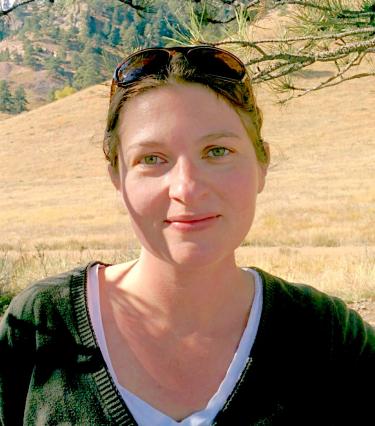Affiliation: University of Colorado at Boulder

Sarah James is Associate Professor with the Department of Classics, University of Colorado at Boulder. Professor James holds a Ph.D. from the Department of Classics at the University of Colorado, Boulder; an M.A. and B.A. from the University of Toronto. Her research interests are the society, economy, and material culture of the Hellenistic Period (4th-1st centuries B.C.), and she excavated at Corinth for 12 years and co-wrote the site’s field manual (UND Digital Press 2017). Her publications include archaeological field reports, as well as articles and book chapters on northeast Peloponnesian ceramics, Hellenistic trade networks, and the cultural transition from the Greek to Roman period. Her new book is Corinth VII.7: Hellenistic Fine Wares (2018), and she is preparing another on the imported pottery from Hellenistic Corinth. She is currently co-director of the Western Argolid Regional Project and assistant director of the Sikyon Archaeological Project in southern Greece. Since 2014 Professor James has served as the president, secretary, and treasurer of the AIA Boulder Society.
Often neglected by Classical scholars, the shining seas of coastal Dalmatia in southern Croatia were powerfully attractive to ancient Greeks and Romans, who first visited, colonized, and then conquered this region during the 1st millennium BCE. Located on several trade routes from central Europe to the Mediterranean, Dalmatia was home to peoples commonly called the Illyrians or Liburnians, who possessed a complex and vibrant culture of their own. Centuries of interaction with Greeks and Romans profoundly impacted these ancient Dalmatians, resulting in changes that can be traced through the archaeological record. New evidence reveals a fascinating story of collaboration and conflict between these groups; a tale which includes the famous “Illyrian pirates.” Using finds from recent excavations, this lecture discusses the most transformative periods of Greco-Roman activity in the eastern Adriatic (6th c. BCE to 2nd c. CE) and offers fresh insights into ongoing debates about ancient Mediterranean trade, traders, and colonization.
Most people have never heard of the ancient Greek city of Sikyon. Despite its reputation as the home of great tyrants, artists, and liberators, Sikyon was known for centuries only from a few accounts by ancient Greek writers and its archaeological remains were largely lost to time. Intensive archaeological work over the past decade by Greek and Danish teams has now begun to reveal the secrets of this once famous and prosperous city. Yet, the biggest challenge to understanding the site remains; the fact that it is actually comprised of two cities: Old Sikyon and New Sikyon. The latter was founded when the Macedonian king Demetrios Poliorketes ordered the Sikyonians to move their city in 303 BCE, an event which we are told caused Old Sikyon to be abandoned and to disappear from the historical record. New archaeological data show, however, that the situation was far more complex than ancient sources imply. This lecture reconstructs what happened at Sikyon from the 6th c. BCE-2nd c. CE and addresses the intriguing questions of how a city was defined in antiquity and what did it mean to move one.